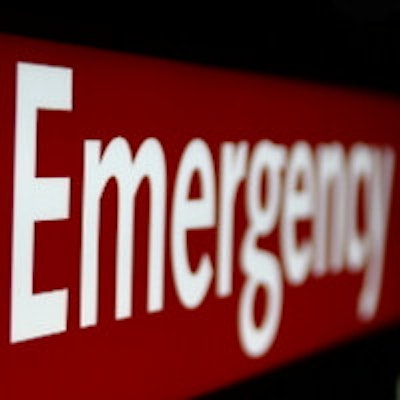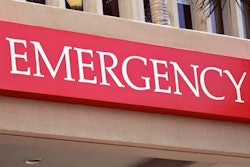
Despite an overall slowdown in the rate of noninvasive diagnostic imaging in other settings, imaging use rates have continued to increase in the emergency department (ED), according to a study presented at the RSNA 2015 meeting by researchers from Thomas Jefferson University in Philadelphia.
This finding suggests that the emergency room is the last frontier in the effort to reduce healthcare costs -- specifically, unnecessary imaging -- a project both the government and insurers have been focused on of late, Dr. Manisha Patel told AuntMinnie.com.
"Imaging use rates have continued to grow in the ED even though there has been an overall downtrend in utilization of advanced imaging services in every other venue, and even though imaging is no longer the fastest-growing component of physician services," she said.
Why is emergency imaging growing?
Why do imaging use rates in the ED keep climbing? It could be because emergency departments are a significant source of medical care in the U.S. In fact, nationwide ED visits increased from 95 million per year in 1997 to nearly 140 million in recent years, which translates into higher imaging use rates, Patel said. Other factors include defensive medicine, dependence on technology, and the difficulty of evaluating complex patients under tight time constraints, she said.
But not every emergency department is seeing the same trend. In her presentation, Patel cited a study from 2014 in which Raja et al found there was more than a 200% increase in volume-adjusted ED imaging based on relative value units (RVUs) at Brigham and Women's Hospital between 1993 and 2007. Between 2007 and 2012, there was a 25% decline, due to decreasing use of CT and MR, quality improvement measures, appropriateness guidelines, and concerns about patient radiation exposure and cost, she said.
Was this particular facility's ability to decrease its ED imaging use an anomaly? To answer this question, Patel's group examined nationwide ED use rates of three types of imaging: x-ray, CT, and noncardiac ultrasound. Their goal was twofold: to determine if decreasing use of imaging is in fact a nationwide trend, and to explore what percentage of these three types of studies are interpreted by radiologists versus nonradiologists.
"We wanted to investigate the question Raja's research posed on a nationwide basis," Patel said.
For the study, Patel and colleagues included Medicare Part B data from 2001 to 2013, using CPT codes to assess the volume of x-ray, CT, and noncardiac ultrasound; Medicare place-of-service codes to distinguish ED exams; and Medicare specialty codes to ascertain the specialty of the exams' interpreting physicians. The group then calculated the ED use rates for each modality per 1,000 Medicare beneficiaries.
They found that ED x-ray use rates increased by 36% between 2001 and 2013, while CT emergency department use rates increased by 229% and noncardiac ultrasound ED use rates increased by 158%.
| ED use rate per 1,000 Medicare beneficiaries by modality | |||
| Modality | 2001 | 2013 | Percent increase |
| X-ray | 238 | 323 | 36% |
| CT | 48 | 158 | 229% |
| Noncardiac US | 8.6 | 22.2 | 158% |
"The CT increase would have been even greater, except for the code bundling that was applied to CT scans of the abdomen and pelvis in 2011," Patel said.
At least radiologists are the ones reading this avalanche of exams: In 2013, they were the main interpreters of ED x-ray exams (98%), CT exams (99%), and noncardiac ultrasound (88%). Vascular surgeons, ED physicians, general surgeons, and cardiologists made up the remaining 12%.
"There has been a steady increase in utilization rates of the three major types of imaging performed in ED patients between 2001 and 2013, and there is no evidence that nationwide ED imaging use is declining," Patel told session attendees. "But radiologists strongly predominate as the interpreters of these exams, despite efforts by other specialties to gain a foothold."
Call to action
The study suggests there's more work to be done to reduce unnecessary imaging, according to Patel.
"Our findings do not contradict the Raja findings, but rather show that their results are only site-specific," she said. "Examining why their institution has seen a decline in ED imaging could provide insight into strategies for reducing ED imaging nationwide, including educating the emergency department on adhering to evidence-based imaging guidelines and increasing awareness of imaging costs and radiation risks."
And there's plenty of room for radiologists to get active, she said.
"Radiologists can continue to take a more active role as gatekeepers of medical imaging to help decrease the number of unnecessary and unindicated imaging examinations," she concluded.



















